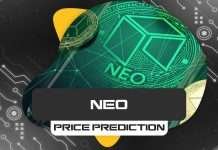
Every day we are seeing more case uses for blockchain technology emerge. It is no longer just a platform for cryptocurrencies and we are seeing an increasing number of uses for the technology in a huge range of sectors.
From elections to healthcare, governmental departments to legal services- bit by bit, blockchain is changing the way that we do pretty much everything.
There is one sector where blockchain technology has a particularly interesting application, and that is in the world of transport and logistics. Particularly in terms of supply chain management, blockchain has been heralded as a game changer that will simplify all processes involved and in turn, create new jobs and increase revenues for all involved.
An example of this is the announcement of the Maersk blockchain. Partnering up with tech-giants IBM, Maersk, the worlds’ largest shipping company will create a new platform designed to simplify and increase efficiency in the global supply chain. This platform will run on a blockchain version called Hyperledger Fabric 1.0.
Supply-Chain Explained
The supply chain is a combination of all the steps that are involved in taking a product from its raw materials and moving it into the hands of the end customer.
Typically a supply chain will begin with a vendor (a supplier)- in other words, a business that provides raw materials. The next step is manufacturing where the raw materials are converted into a product. The final step of the process is distribution and this is where the final product is packaged, shipped, and delivered to the end client.
There are often multiple intermediaries at this stage and they can include wholesalers, retailers, distributors, and even the internet.
The various different stages of the supply chain are referred to as either upstream or downstream. An upstream operation is where the materials flow into the organisation or company and a downstream operation is where the materials or finished products flow away to the customers.
The word “logistics” is often used when we talk about the supply chain as a hold.
Inbound logistics relate to the upstream activities and include all of the materials and parts of a product before it is manufactured- it involves the receiving of materials, sorting them, and the processes that are required to produce them. Outbound logistics relate to the processes involved in moving the product once it has become a finished product.
Other words used in this sector include procurement and sourcing which can be used interchangeably with the supply chain, despite referring to slightly different parts. Sourcing is, in fact, a part of the procurement process and together they are a part of the supply chain.
When you source a product, you are evaluating various suppliers for products and negotiation is a big part of the process as the profitability of a business relies heavily on the cost of materials. Procurement involves finding products but also creating various quality standards including buying the correct quantities in a timely order to maintain the proper flow of materials into the company.
Who Is Maersk?

Maersk is Danish, a multi-national business conglomerate with its main activities focusing on logistics, transport, and the energy sector. Since 1996 they have been the worlds largest container ship and supply vessel operator and they have offices in around 130 countries with over 88,000 employees.
In September 2016, Maersk Group announced that they would be separating into two separate and unique divisions; transport and logistics, and energy.
The transport and logistics division now takes control of what is undoubtedly the world’s largest overseas cargo carrier. They operate over 600 vessels with around 3.8 million 20ft container capacity.
Their fleet holds 15.1% of the global TEU. This equates to an incredible amount of products being moved around and therefore, having a totally reliable way of managing all logistics in a way that cannot be tampered with, is of great interest to them. This is where blockchain technology comes in.
Maersk, IBM, and the Blockchain
Teaming up with technology giant, IBM, Maersk has created a new company that will seek to commercialise blockchain technology, particularly for use in the transport and logistics industry.
The fact that the blockchain works as a shared accounting ledger is a big plus and this new venture will service shippers, offices, banks, ports, customs and suppliers, in the global supply chain sector.
They aim to create a solution which will replace paperwork or outdated computer platforms, with immutable, tamper-resistant digital records.
The idea behind the new company is to combine experience and knowledge and to develop a digital global trade platform that will be used by the entire shipping ecosystem across the world. It will offer more simplicity and transparency and provide a smoother way of transporting goods across trading zones and borders.
Every year, more than $4 trillion in goods are shipped and 80% of these are carried by the ocean shipping industry. At the moment, the cost of all the paperwork and documentation required to ship goods amounts to 1/5 of the actual transportation cost.
If these costs can be reduced and barriers can be negated, then the amount of global trade could increase by as much as 15% creating more jobs and boosting the global economy at the same time.
Maersk, in conjunction with IBM, will create a new platform that will be powered by the blockchain. It will also include other new technologies such as artificial intelligence and cloud-based solutions. It will help businesses move and track goods digitally and in real time, solving many of the issues around cross-border payments, digital identification, and supply chains. So how will they do it?
Hyperledger Fabric
The project will be built on IBM blockchain technology which will be provided through the IBM cloud and powered by something called Hyperledger Fabric 1.0. This is a blockchain framework and one of the Hyperledger projects that are created and hosted by the Linux Foundation. It was designed to be the foundation for creating other applications and solutions with a modular-based architecture.
Hyperledger Fabric facilitates services such as membership and consensus services and allows them to be plug and play. It also uses container technology to provide smart contracts known as “chain code”- these are basically the application logic of the system.
It is a permission infrastructure which offers a modular architecture comprising of Peer nodes which execute chain code, access ledger data, endorse transaction, and interface with other applications. Orderer nodes are there to ensure the consistency of the blockchain and to deliver the endorsed transactions to the peers of the network.
How Does It Work?
The vision of this project is huge and it is set to completely change the shipping and logistics industry on a global scale.
In 2016, IBM and Maersk carried out a test to see how blockchain could change the industry. It shipped just one container of roses from Kenya to the Netherlands using the traditional approval process. This resulted in over 200 documented communications, just for one single container.
By using smart contracts, IMB/Maersk will allow the relevant parties on the supply chain to see the other parties’ signatures as well as to track where the containers are along the chain.
This will greatly improve the existing system of communication and could lead to big decreases in delays, lost paperwork and even fraud. There is a huge amount of potential for using smart contracts in the shipping industry as they have the ability to be able to unify multiple parties that have previously suffered disjointed communication.
Shipping lines, freight forwarders, port and terminal operators, customs departments, and of course, manufacturers will all have access to the platform and as such, will all be involved in the process.
By using Hyperledger Fabric, not only will the efficiency of the worlds supply chain increase, but the Global GDP could increase by as much as 5%.
Why Is It a Revolution?
There is no doubt that this new project will create huge waves in the industry. Not only is it revolutionary because of its size, the technology it uses, and the benefits it will bring, but it will save the industry a huge amount of money.
Whilst this project is expected to yield very impressive results very quickly, they are facing some pretty stiff competition.
Waltonchain and VeChain are just two examples of supply-chain focussed cryptocurrencies that have appeared on the market.
Waltonchain is a Chinese-Korean based project that was founded in November 2016. It uses a combination of blockchain and RFID technology to evolve the way in which clothing retailers can track and store data to be used to understand the popularity of various products.
VeChain is based in Singapore and offers similar solutions to improve the worldwide supply chain. Partnering with Direct Imported Goods (DIG) China’s largest importer of fine wines, they have been taking huge steps towards combating the Chinese issue of fake wine imports. They have also partnered up with Renault, one of France’s top car manufacturers.
These projects may be promising, but it is likely that they will be eclipsed by what Maersk and IBM have to offer.
Companies such as DuPont, Dow Chemical, and Tetra Pak are also conducting various stages of tests using the platform and General Motors and Procter and Gamble have also said they would be interested in using it.
The thing that makes this project from IBM and Maersk so interesting is that it has also been piloted by various national governments and port authorities on a global scale.
Participating entities include Port Houston, Rotterdam Port Community System Portbase, and the U.S. Customs and Border Protection. Additionally, Singapore Customs, Peru Customs, and China’s Guangdong Inspection and Quarantine Bureau have also said that they are extremely keen to try out this new platform.
All of this attention, so early on and from some of the leading companies and government departments in the world makes IBM/Maersk one of the most eagerly anticipated blockchain projects the world has ever seen.
The reason there is so much hype around this solution is not only because of the size of the cross-industry collaboration that is taking place. Specifically, it is a part of a much bigger trend to change the way that our traditional industries operate. To stay competitive, companies have to keep innovating.
The two companies are working together to innovate and create excitement in what is traditionally a non-innovative industry. Most importantly, the demand from consumers for shipped goods is only increasing.
As blockchain technology becomes more and more mainstream, we will see many established companies continuing their research and implementation. The hardest part is understanding how it can be utilised in a way which helps businesses become more efficient.
This is where IBM and Maersk are succeeding. Whilst the project is still in its infancy, many are waiting excitedly t see how it will evolve in the coming years. Watch this space!
Read more about Blockchain Revolutionising The World.



![Bitcoin Buyer Review of Official Website [2022] bitcoin buyer review featured image](https://bitemycoin.com/wp-content/uploads/2022/04/bitcoin-buyer-review-featured-218x150.jpg)
![Bitcoin Digital | Official Website Review [2022] bitcoin digital review featured](https://bitemycoin.com/wp-content/uploads/2022/04/bitcoin-digital-featured-218x150.jpg)



